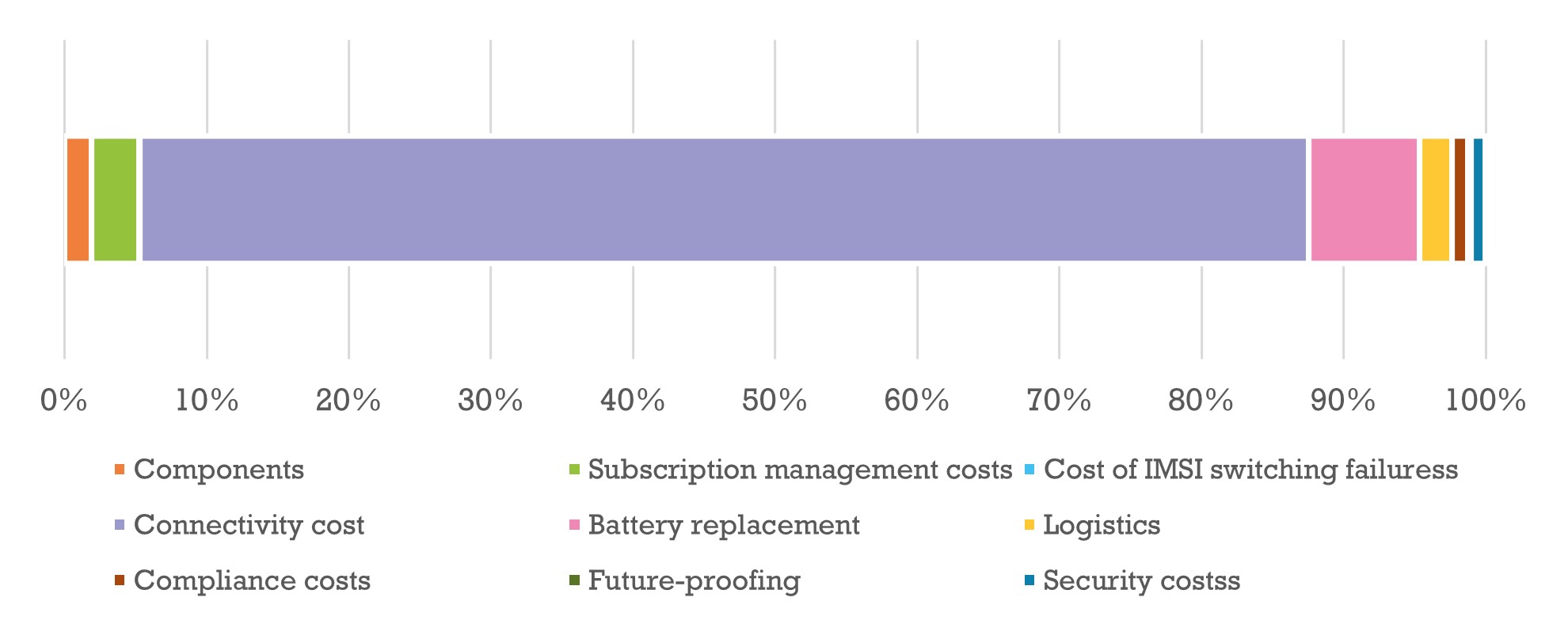A few days ago, we at Transforma Insights published a report, sponsored by Quectel, entitled 'Using eSIM and iSIM will save money for IoT deployments'. The report identifies the relative costs associated with various different SIM, multi-IMSI, eSIM, iSIM and remote SIM provisioning options. Overall, the key finding was that using eSIM and iSIM will save on average between 8% and 13% of the lifetime connectivity costs of an IoT deployment compared to using regular plastic SIM card with a fixed single IMSI.
Given that there is, at least currently, a price premium associated with using eSIM and iSIM in the form of higher bill of materials costs and/or the addition of subscription management charges, this naturally focuses attention on where the cost savings are likely to be made.
In the chart below we show the total lifetime cost of the average IoT deployment split between the various elements. As we can see, the cost of the hardware component is only around 1.9%, and potential switching fees on average 3.4%. This compares to a huge 82% stemming from the connectivity fees, i.e. the monthly recurring charges for connectivity. It is the savings that can be made in that area which more than compensate for higher hardware or explicit switching costs.

By using remote SIM provisioning, the connected device will typically localise onto a domestic network, rather than relying on roaming and the associated higher tariffs. Just a small saving or a monthly basis for the lifetime of the device can more than compensate for the up-front and occasional cost of IMSI switching.
There are clearly a lot of variations depending on the type of deployment and technology used, which is the reason why the White Paper modelling looked at dozens of different use cases and each of the four major cellular technologies (4G, 5G, LTE-M and NB-IoT). As a result, some applications may gain little benefit from localising rather than roaming, for instance those that are constantly moving geography such as container tracking. For others it will be quite substantial.
The other less obvious costs can also have a significant bearing on savings. One is ‘battery replacement’, meaning the frequency with which, for battery-powered IoT solutions (which will soon be the majority) the power cell needs to be replaced. This will be more often for solutions using plastic SIMs and where there is frequent IMSI switches. Given how expensive it might be to send someone to replace a battery, minimising this requirement by using more energy efficient approaches can move the needle in terms of the total cost of the connectivity.
Similarly, the logistics cost. Using eSIM and iSIM effectively removes the cost to the end customer of shipping plastic SIM cards to be used with the IoT device, the nominal cost of manual insertion, the potential debugging costs for those manually inserted SIMs, and the localisation of the deployment with the provisioning of access point names (APNs) and similar. While this is only an irregular occurrence, potentially happening only once in the lifetime of the device, there is still a cost associated with managing it.
All of these, and more, costs are considered in the white paper to ensure that we get to grips with the total cost of connecting a device and maintaining its connection through its lifetime.
For more details on the white paper, including where to download it, see our press release ‘New study shows 8-13% saving on lifetime connectivity spend from using eSIM/iSIM in IoT’.